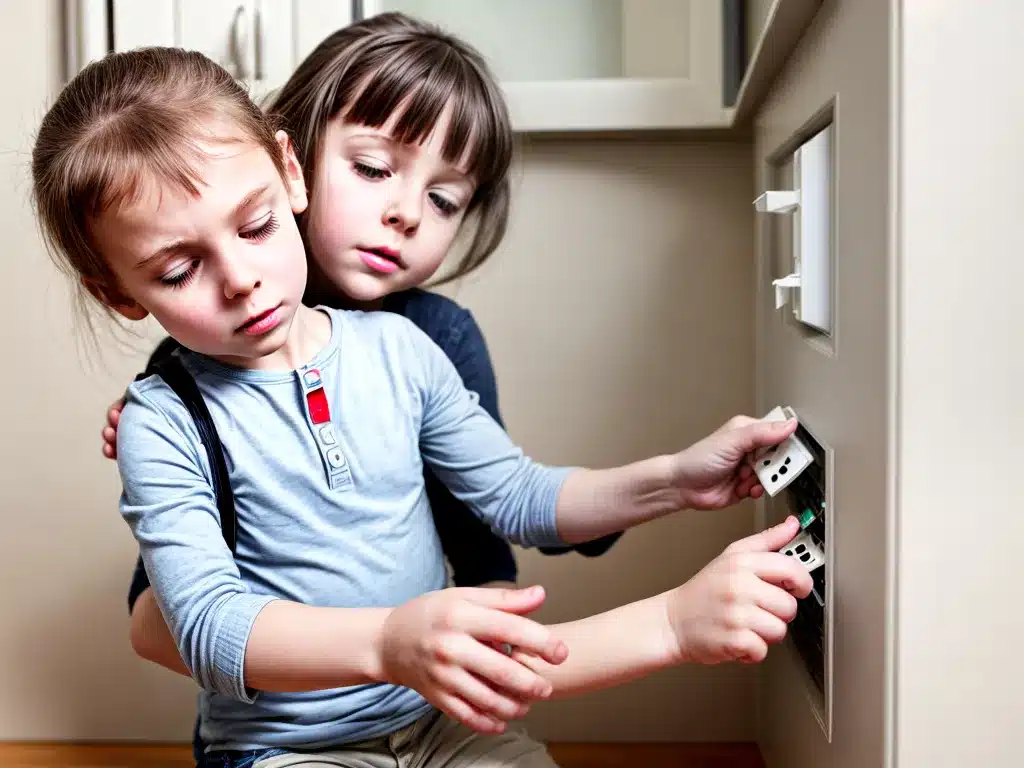
Keep Your Kids Safe: Are Your Home Outlets Up To Code?
Why Outdated Electrical Can Be Dangerous
I want to ensure my children’s safety in our home, which is why electrical outlets and wiring have been top of mind lately. Outdated electrical can present serious risks like electrical fires and electrocution. This is not something any parent wants to think about, but being proactive now can prevent tragedy down the road.
According to the U.S. Fire Administration, faulty electrical wiring and outlets cause over 40,000 fires each year. Additionally, thousands of people are electrocuted annually, many of them children. Electrocution can cause severe burns or even cardiac arrest.
To keep my children protected, I need to confirm that my home’s electrical system is up to current codes and not compromised by age or improper installation. Ignoring warning signs like frequent tripped breakers, flickering lights, and warm outlets or switches could prove deadly.
Inspecting My Home’s Electrical System
How can I evaluate if my home’s electrical is outdated or dangerous? Here are a few steps I plan to take:
-
Check the age of my electrical panel/service box. If it is over 20 years old, it likely needs replacement by a licensed electrician. Newer panels have extra safety features.
-
Inspect visible wiring. I will look for cracked/fraying wire coverings and exposed wires which indicate a shock or fire hazard. Electrical tape repairs are warning signs too.
-
Test outlets and switches. I’ll use a outlet tester to check for proper wiring, grounding and polarity. Any issues indicate my outlets need replacement.
-
Note warm spots. I’ll check for outlets or switches that are unusually warm to the touch, since heat can signal an unsafe electrical load.
-
Assess condition of outlets. Loose, damaged or outdated outlets with no grounding need to be upgraded to maintain safety.
-
Watch for tripped breakers. Frequent tripping indicates overloaded circuits that require repair.
-
Consider an upgrade. If my home still has outdated 60 amp service, an upgrade to 200 amps may be wise to handle increased electrical demand.
Being vigilant and correcting any deficiencies or outdated wiring ensures my family lives safely. I’d rather invest in repairs proactively than risk injury, fire or worse.
Improving Electrical Safety
If I discover any problems with my home’s electrical system, here are some next steps I will take to improve safety:
-
Hire a certified, licensed electrician to make all repairs. DIY is not wise for major electrical work.
-
Upgrade any outlets without grounding. Grounded outlets prevent shocks better.
-
Install tamper-resistant outlets (example) in areas accessible to children. They prevent kids from inserting objects.
-
Use outlet covers (example) to prevent access to unused outlets.
-
Consider installing arc fault circuit interrupters (AFCIs) which shut off power when a dangerous arc occurs.
-
Use surge protectors (example) to protect electronics from electrical spikes.
-
Label circuit breakers clearly so I can quickly cut power in an emergency if needed.
-
Teach children to avoid outlets and report any damaged electrical they see to an adult immediately. Monitoring their interaction with outlets is ideal.
I don’t want to chance my family’s wellbeing by ignoring potential electrical hazards in our home. Following safety codes and making upgrades ensures healthy, protected kids. I’m willing to invest in necessary repairs for peace of mind.
